Best Respirators For Woodworking 2024
- April 2, 2024
- 0 comment
Discover the Best Woodworking Respirators of 2024 with our comprehensive guide. Learn how to protect your lungs from hazardous dust and vapors and find the perfect fit for safety and comfort in your woodworking projects.
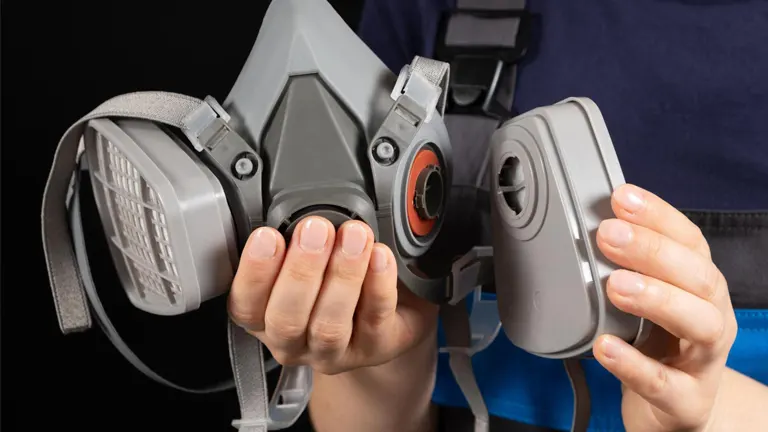
Woodworking combines creativity with precision but carries the risk of inhaling harmful airborne particles, leading to serious respiratory issues. The threat of fine dust and toxic vapors can turn a productive workshop into a dangerous environment, creating a need for more than just regular masks. High-quality respirators designed for woodworking offer a solution with their advanced filtration systems, comfort, and durability, ensuring protection against these invisible threats. This article explores the Best Respirators for 2024, helping woodworkers safeguard their health while indulging in their craft.
List of the Best Respirators For Woodworking:
- Best Versatile Performer: 3M Half Facepiece Reusable Respirator 6000 Series
- Best Compact Filtration: GVS Elipse P100 Half Mask Respirator
- Best Comfort Fit: Trend Stealth Air Half Mask
- Best Gentle on Skin: North by Honeywell 7700 Series Half Mask Respirator
- Best Comprehensive Coverage: 3M Full-Facepiece Respirator 6000 Series
What is a Respirator?
A respirator is a protective device worn over the face designed to filter out harmful airborne particles, gases, or vapors, providing clean air for the wearer to breathe. It’s essential in environments with contaminated air to prevent inhalation of dust, smoke, chemicals, or infectious agents, ensuring the safety and health of the individual.
1. 3M Half Facepiece Reusable Respirator 6000 Series
The 3M Half Facepiece Reusable Respirator 6000 Series is a masterclass in safety and versatility for the woodworking enthusiast. Available in small, medium, and large sizes, this respirator caters to every face shape, ensuring a snug and secure fit. Its thermoplastic elastomer material doesn’t just sit comfortably against the skin; it forms a formidable barrier against the onslaught of particulates and gases encountered in woodworking. The beauty of this device lies in its simplicity and efficiency—easy-to-adjust head straps make donning the respirator a breeze, and its lightweight design means you’ll hardly notice it’s there, even during the long haul of sanding, sawing, or painting.
What sets the 3M respirator apart is its adaptability and conscientious design. Not only is it NIOSH approved for a variety of applications, ensuring you’re covered for every task from demolition to detailed painting, but it also supports a range of cartridges and filters, tailor-made for different hazards. The bayonet connection system is the cherry on top, making cartridge and filter swaps quick and hassle-free. Moreover, the half facepiece can be disassembled, cleaned, and reused, speaking volumes of its longevity and the brand’s commitment to sustainable practices. For woodworkers who demand reliability and flexibility in their protective gear, the 3M™ Half Facepiece Reusable Respirator 6000 Series is not just a choice; it’s the benchmark.
2. GVS Elipse P100 Half Mask Respirator
The GVS Elipse P100 Half Mask Respirator stands out in the crowded field of woodworking safety equipment for its compact, lightweight design that doesn’t compromise on protection. Tailored to fit the contours of the face, it ensures a tight seal and maximum coverage while allowing for full visibility, essential for precision tasks in woodworking. Its design shines in how it accommodates additional safety gear without interference, a common gripe among craftsmen. The central non-return valve is a game-changer, reducing breathing resistance and minimizing moisture build-up, which can be a significant annoyance during intense, sweat-inducing tasks.
Beyond its ergonomic design, the Elipse P100 brings formidable protective capabilities to the table. Its filters, boasting a 99.97% efficiency at 0.3 microns, are a bulwark against a spectrum of hazardous particles, from wood dust to toxic substances like asbestos and lead. This high level of efficiency is essential for woodworkers, who face a variety of airborne threats in their daily work. The respirator’s materials are chosen with care for the user’s comfort and safety, being free from common irritants like latex and silicone, and the mask’s longevity is assured with a five-year storage life for both the mask and filters. For woodworkers who value comfort without sacrificing safety, the GVS Elipse P100 is a solid choice, marrying advanced filtration technology with a user-friendly design.
3. Trend Stealth Air Half Mask
The Trend Stealth Air Half Mask represents a leap forward in respiratory protection, combining comfort and cutting-edge filtration in one robust package. Its standout feature is the lower exhalation valve, designed to provide a breathable work experience free from the annoyance of fogged glasses, a common issue for spectacle-wearing woodworkers. This half mask doesn’t just sit comfortably on the face; its extensive filter surface area offers full respiratory protection, shielding the wearer from a myriad of particles found in woodworking environments like silica and concrete dust, as well as oil aerosols.
What truly sets the Trend Stealth Air apart is its commitment to user-friendly design. Made from odor-free and non-allergenic materials, it’s a godsend for those with sensitive skin, sidestepping the irritation often caused by latex and silicone. Its twin HEPAC pleat encapsulated filters are a marvel, achieving 99.99% filtration efficiency for particles 0.3 microns and larger, which means virtually all harmful airborne particles encountered in woodworking are trapped. This level of filtration, coupled with its comfort and versatility across a range of tasks from painting to welding, makes the Trend Stealth Air Half Mask a top contender for woodworkers seeking serious protection without sacrificing comfort.
4. North by Honeywell 7700 Series Half Mask Respirator
The North by Honeywell 7700 Series Half Mask Respirator sets the standard in comfort and protection. Crafted from 100% medical grade silicone, this mask doesn’t just fit your face, it caresses it, providing a wide sealing area that ensures both an exceptional fit and a level of comfort that makes long hours in the workshop feel like a breeze. The cradle suspension system, with its woven straps, allows for dynamic movement, offering support without compromising mobility, a crucial feature for woodworkers who need to move freely without their gear getting in the way.
Beyond its superior comfort, the 7700 Series is a paragon of versatility and performance. It can effortlessly convert to a Powered Air-Purifying Respirator (PAPR) or supplied air respirator, catering to a range of working environments and demands. The mask’s thoughtful design includes varying thickness in the sealing area, providing robust support under the chin and gentle flexibility across the nose bridge, ensuring a snug fit for various face shapes. The exhalation valve reduces heat and moisture build-up, maintaining a cool and dry experience throughout use. With its combination of medical-grade materials, adaptable design, and comprehensive protection, the North by Honeywell 7700 Series is more than a half mask; it’s a reliable partner in the rigorous world of woodworking.
5. 3M Full-Facepiece Respirator 6000 Series
The 3M Full Facepiece Respirator 6000 Series is a marvel in the realm of comprehensive respiratory protection, offering a full-face shield that doesn’t skimp on comfort. The soft, elastomeric facepiece, coupled with a four-strap suspension system, ensures a comfortable fit that is as easy to put on as it is to take off. The large polycarbonate lens is a standout feature, providing excellent visibility and a broad field of view, crucial for maintaining precision and awareness in detailed woodworking tasks. This lens complies with EN166:B performance requirements, signifying its high-quality protection against impacts and splashes, which are common in woodworking environments.
What makes this respirator a top choice for woodworkers is its versatility and ease of use. The 3M™ Cool Flow™ Valve is a game-changer, significantly reducing heat and moisture build-up inside the mask, thus offering a cooler and more comfortable experience during prolonged use. Compatibility with a wide range of 3M twin lightweight filters via the Bayonet Connection System allows for customized protection against gases, vapors, and particulates, making it suitable for a variety of woodworking processes. The thoughtful design extends to maintenance as well, with readily available spares and accessories to ensure the respirator remains in top condition. Lightweight yet durable, the 3M Full Facepiece Respirator 6000 Series is a comprehensive solution for woodworkers seeking maximum protection without sacrificing comfort.
Comparison Table of Respirators For Woodworking
| Feature | 3M Half Facepiece 6000 Series | GVS Elipse P100 | Trend Stealth Air Half Mask | North by Honeywell 7700 Series | 3M Full Facepiece 6000 Series |
|---|---|---|---|---|---|
| Type | Half facepiece | Half mask | Half mask | Half mask | Full facepiece |
| Material | Thermoplastic Elastomer (TPE) | Medical grade TPE | TPE mask body | 100% medical grade silicone | Silicone |
| Filter Efficiency | NIOSH approved, P100 | P100, 99.97% at 0.3 μm | 99.99% at 0.3 microns and above | NIOSH approved, specific efficiency not stated | NIOSH approved, specific efficiency not stated |
| Size Options | Small, Medium, Large | Small, Medium | One size fits all | Small, Medium, Large | Small, Medium, Large |
| Reusable | Yes | Yes, with replacement filters | Yes, with replaceable filters | Yes | Yes |
| Respiratory Protection | Particulates, gases, and vapors | Dust, fumes, micro-organisms, various hazardous particles | Silica dust, brick dust, concrete dust, etc. | Not specified, but converts to PAPR or supplied air | Gases, vapors, and particulates |
| Special Features | Easy-to-adjust head straps, can be disassembled and cleaned | Compact, lightweight, adaptable to face, large central non-return valve | Breathable, low resistance, large filter surface area | Latex-free, comfortable with adjustable straps | Cool Flow™ Valve, large lens for visibility, four-strap suspension |
| Recommended For | Assembly, Cleaning, Demolition, Grinding, etc. | Mining, steel mills, foundries, etc. | Water-based painting, building, welding, DIY, etc. | General industrial use | Construction, General Manufacturing, etc. |
| Price Range | $23.77 | $52.28 | $9.99 | $27.49 | $124.00 |
Understanding Respirator Choices: Dust Masks vs. Respirators
Choosing the right respiratory protection can be daunting, especially with the myriad of terms and options available. This content aims to demystify these choices, ensuring you make an informed decision suitable for your needs. We’ll explore the fundamental differences between dust masks and respirators, dive into the specifics of filtration ratings like NIOSH approvals, and discuss the effectiveness of various masks against airborne particles and organic vapors.
Dust masks, often with a single strap, provide basic barrier protection, primarily keeping particles emitted by the wearer from spreading. However, they fall short in filtering incoming air, offering minimal protection against environmental hazards. Not being NIOSH approved, their reliability in more demanding or hazardous settings is questionable, leading many professionals to deem them inadequate for serious protection.
Contrastingly, respirators, often with two straps, offer a snug fit, enhancing their ability to filter out fine particles like sawdust effectively. NIOSH-certified respirators assure a level of filtration efficacy — for instance, an N95 respirator filters 95% of airborne particles. But, these might not protect against organic vapors found in substances like oil-based paints or solvents. Understanding the meaning behind the rating letters (N, P) and numbers (95, 100) on respirators is crucial for choosing the right type for your environment.
Furthermore, the mechanism of filtration, be it through weave density or a static electric charge, plays a vital role in how these respirators function. We’ll also touch on the significance of NIOSH, the body that certifies and ensures the quality and reliability of respirators, testing them against rigorous standards to guarantee their effectiveness down to 0.3 microns.
Understanding NIOSH and Regulatory Standards
When selecting a respirator for woodworking, you’ll often come across references to NIOSH and other regulatory standards. NIOSH, the National Institute for Occupational Safety and Health, sets the benchmark for respiratory protection in the U.S. Here’s what these standards mean in simple terms:
- NIOSH Approval: If a respirator is NIOSH approved, it means it has been rigorously tested and meets stringent criteria for protection against specific hazards. For example, the NIOSH P100 rating on the GVS Elipse P100 Half Mask Respirator indicates it filters at least 99.97% of airborne particles, providing superior protection against very fine dust, mists, and fumes.
- Size and Fit Testing: NIOSH standards also ensure the respirator fits correctly to provide the intended level of protection. This is why you’ll see respirators like the 3M Half Facepiece Reusable Respirator 6000 Series available in different sizes, ensuring a proper seal against the face to prevent particle infiltration.
- Assigned Protection Factor (APF): This number tells you the level of protection a respirator provides. For instance, an APF of 10 means the respirator can reduce exposure to contaminants by ten times the permissible exposure limit. The North by Honeywell 7700 Series, for example, would have an APF indicating it provides sufficient protection for most woodworking applications.
- Certifications and Compliance: Some respirators are also compliant with international standards, such as EN166:B for the 3M Full-Facepiece Respirator 6000 Series, which ensures it protects against high-speed particles and liquid splashes, crucial for tasks like power sanding or using chemicals.
Overall Conclusion
In conclusion, the best respirators for woodworking in 2024 are those that provide a combination of advanced filtration, comfort, and durability. From the adaptable fit of the 3M Half Facepiece Reusable Respirator 6000 Series to the compact design of the GVS Elipse P100 Half Mask Respirator, and the comfort-focused features of the Trend Stealth Air Half Mask, each model offers unique benefits tailored to the diverse needs of woodworkers. The North by Honeywell 7700 Series stands out for its medical-grade silicone construction, suitable for sensitive skin, while the 3M Full Facepiece Respirator 6000 Series offers comprehensive protection with its full-face design. These respirators not only meet the safety standards like NIOSH approval but also enhance user experience through ergonomic design and material choice. Selecting the right respirator in 2024 will depend on the specific requirements of the woodworking tasks at hand, ensuring that workers are not only protected from harmful particulates and vapors but also comfortable and unrestricted in their craftsmanship.
FAQs
- Can woodworking respirators be used for other types of work, like painting or chemical handling?
Yes, many woodworking respirators are versatile enough to be used in other environments, such as painting or handling chemicals, provided they have the correct filter types. For example, a respirator with an organic vapor cartridge is suitable for painting, while a P100 filter is effective against dust and particulates in woodworking. - How often should I replace the filters on my woodworking respirator?
Filter replacement depends on usage frequency and the level of particulates in the environment. Generally, replace the filter when it becomes difficult to breathe through, or if the filter is visibly dirty or damaged. Following the manufacturer’s guidelines for specific intervals based on your usage conditions is recommended. - Are there any respirators specifically designed for people with beards?
While no respirator is specifically designed for bearded individuals, certain full-face respirators or those with flexible silicone facepieces may provide a better seal around facial hair. It’s crucial to conduct a fit test to ensure an effective seal, as facial hair can compromise the fit and protection offered by the respirator. - Can I wear glasses or safety goggles comfortably with a woodworking respirator?
Many respirators are designed with enough space to accommodate glasses or safety goggles. Full-face respirators often have integrated eye protection with large visors, eliminating the need for separate safety glasses. - How do I perform a fit test for my respirator at home?
To perform a basic fit test at home, place the respirator on your face and adjust it according to the manufacturer’s instructions. Cover the filters with your hands and inhale or exhale sharply; you should not feel air leaking around the edges. If air leaks, adjust the fit and test again until the seal is tight. - Are there any child-sized respirators for woodworking?
Child-sized respirators are less common, but some brands do offer smaller sizes that may be suitable for older children or adolescents. It’s important to ensure a proper fit to provide effective protection. - What should I do if my respirator starts to feel uncomfortable after wearing it for an extended period?
If a respirator becomes uncomfortable, take a break in a safe, dust-free environment to remove the mask and relax. Check for any points where the respirator may be too tight or causing irritation and adjust as needed. Comfort pads or cushioning may also be added to improve fit and reduce discomfort. - Is it possible to sanitize and reuse disposable N95 respirators for woodworking?
While some disposable N95 respirators can be reused in the short term, they should be discarded if they become soiled, damaged, or difficult to breathe through. For woodworking, where dust exposure is high, it’s better to use a reusable respirator with replaceable filters.
And there you have it, folks! The scoop on the best respirators for woodworking in 2024. But we’re all about the community here, so don’t just take our word for it. We’d love to hear your thoughts and experiences. Have you tried any of these respirators? Got a favorite or a tip to share? Drop your comments below and let’s keep the conversation going. Sharing is caring, so if you found this guide helpful, pass it on to your fellow woodworkers. Let’s ensure everyone breathes easy while crafting their masterpieces!

David Murray
Forestry AuthorI'm David Murry, a forestry equipment specialist with a focus on chainsaw operation. With over 13 years of experience, I've honed my skills in operating and maintaining a wide range of machinery, from chainsaws to log splitters. My passion for the outdoors and commitment to sustainable forestry drive my work, which emphasizes safety, efficiency, and staying updated with industry advancements. Additionally, I'm dedicated to sharing my expertise and promoting environmental awareness within the forestry community.

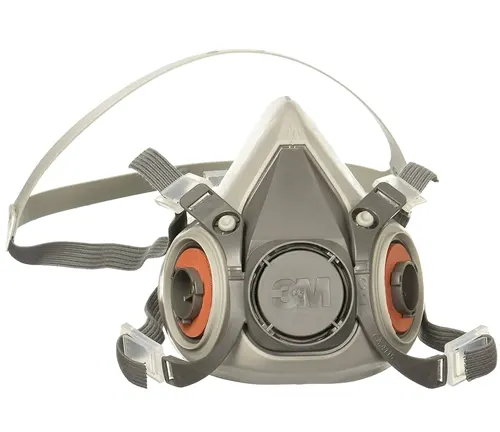
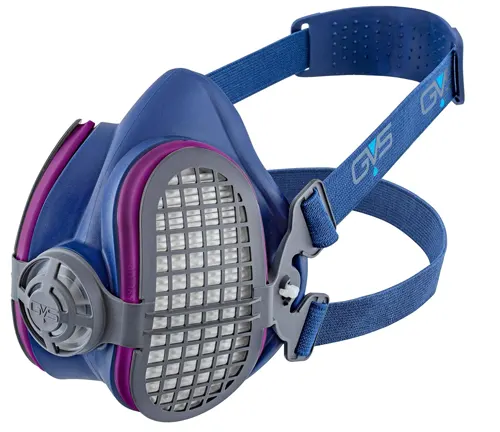

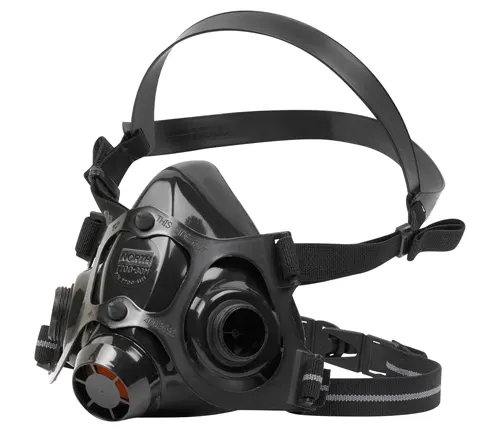
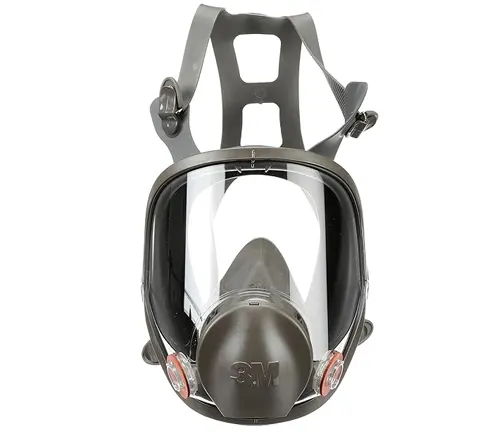








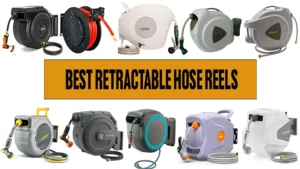



Leave your comment